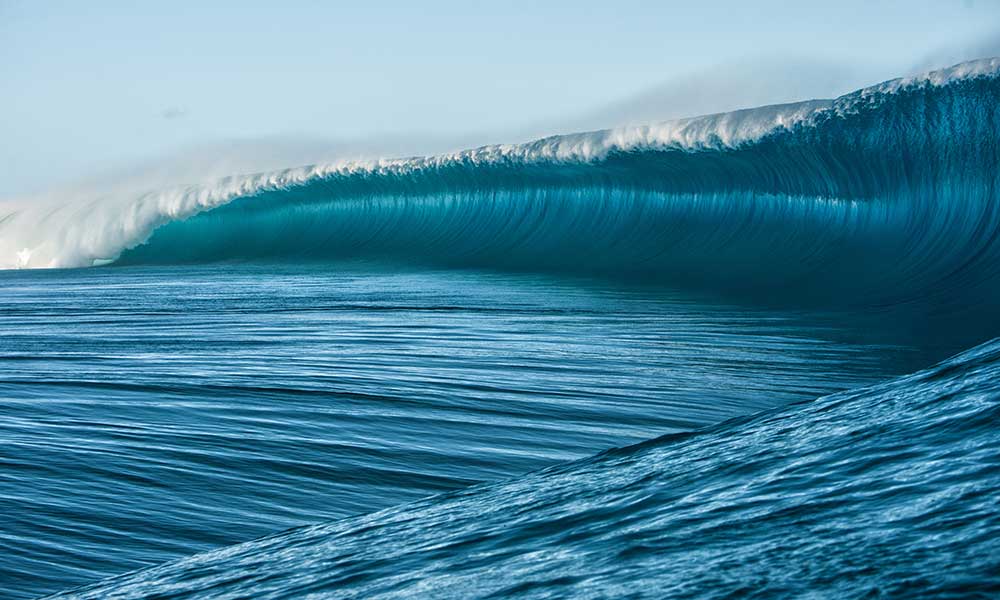Slab waves have been called the “world’s heaviest waves”, as well as a “new frontier” in surfing.
Slab waves are short, heavy, immense, and unforgiving waves, and they’re definitely not for the faint of heart.
But what are slab waves, what’s the right way to surf them, and where can you find them?
What are Slab Waves?
Waves usually move toward the shore, slow as they rise, and break cleanly to one side or both sides.
These are the waves that surfers have tackled for generations.
They move slowly and are highly predictable compared to slab waves which move quickly through deep water, and speed toward a shallow dry reef or cliff.
Surfing a slab wave has been likened to escaping a collapsing building, in which case the goal of a surfer is to be the cool-headed action hero who makes it through the smoke unscathed, as opposed to the villain who gets crushed under the weight of the concrete.
Why are Slab Waves Surfed?
The answer to the question of “why” is the same as always: Because we can.
And by “we”, we’re referring to highly-skilled (and maybe slightly crazy) surfers who want the ultimate challenge.
For a long time, it was thought that these waves were not surfable.
That changed back in the early 2000s when Laird Hamilton surfed a wave that was said to be 40-feet high and 10-feet thick at Teahupoo.
Slab waves are now commonly surfed by experienced surfers all over the world.
There are a handful of events held at popular slab wave locations and these waves always make for some good photo or video opportunities.
Where to Find Slab Waves
You can find slab waves off the coast of Tasmania (at Shipstern’s Bluff) and even off the coast of Scotland.
However, most surfers head for Teahupoo, Tahiti.
This is where Hamilton rode the famous big wave and it’s where you can find the most challenging slab waves.
The name “Teahupoo” actually translates as something like “to sever the head” and it has been called one of the heaviest waves in the world.
It has also claimed the life of professional surfer Brice Taerea who died here in 2000 when he was tossed from a wave and landed in the reef.
Cyclops in Western Australia, The Cave in Portugal, and Ours (which hosted the 2016 Red Bull Cape Fear event won by Russell Bierke) are also popular slab surf spots.
They are one of the most challenging types of waves you can encounter as wipeouts on these waves can be deadly.
As a result, they are best reserved for experienced surfers who have plenty of water safety around for when, not if, but when dangerous situations arise.







